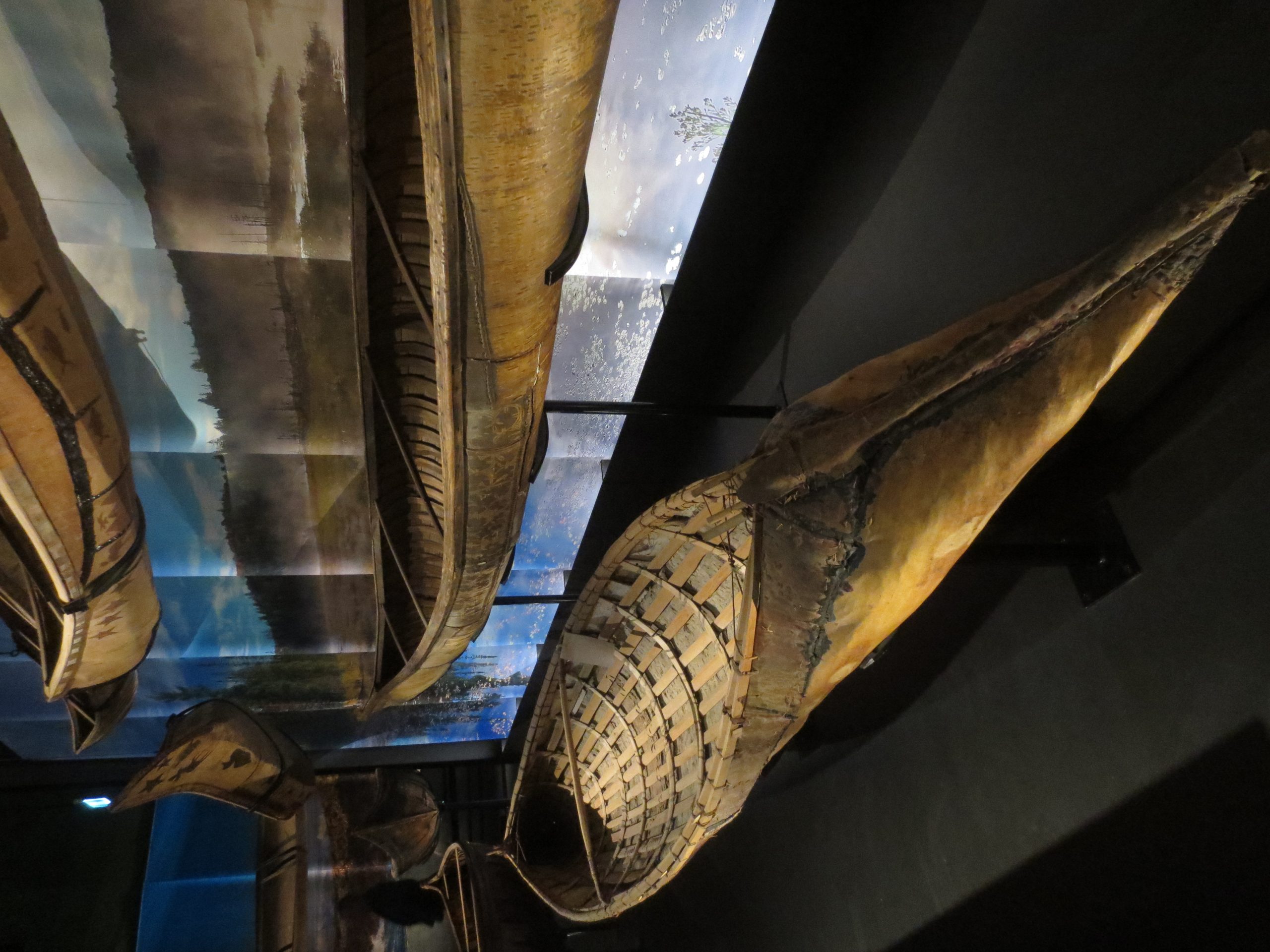
Sector: Arts & Culture
Linking communities from coast to coast, through watercraft
From the outside, the Canadian Canoe Museum is an impressive sight. The two-storey, 65,000-square-foot museum resembles a canoe itself, nestled on a five-acre lakefront lot in Peterborough, Ontario.
“It’s been a big journey for us to put our full collection under one roof,” says Carolyn Hyslop, executive director of the museum. She’s beaming with pride as she looks out over the museum’s verdant lawn. “We wanted to basically build a campus on the water that allows us to connect people from the canoes or kayaks in the museum to on-water experiences.”
Situated on the Traditional Territory of the Williams Treaties First Nations, the campus offers easy access to Little Lake and the Otonabee River. It’s also connected to the Trans Canada Trail, meaning that visitors can enjoy a range of indoor or outdoor experiences.
“We wanted to create a museum that is a community hub, with lots of room for recreation,” explains Hyslop.
“This location allows us to have all of our on-water outdoor experiences, while also having an indoor museum experience. So you can come by and have a cup of coffee with a friend, or go out for a walk in nature. There’s a little something for everyone.”
The museum itself offers visitors a multi-sensory, welcoming experience. Walking through the front doors, visitors enter a room wrapped in beautiful Canadian wood, with high ceilings and canoes suspended carefully from the ceiling. An authentic stone fireplace warms the museum’s cafe, and the smell of cedar hangs in the air while resident builders and canoe makers bend planks.
With over 600 canoes and kayaks in its collection, the museum holds important links to the history of the land that is now called Canada. Hyslop notes that part of the motivation behind building the contemporary new museum was to put the collection under one roof, accessible to visitors, donors, researchers, and anyone with an interest in watercraft to visit easily. One of the most important motivations behind building the museum, she says, was to create a space that respected relationships with Indigenous communities and encouraged acts of reconciliation.
“Many of these canoes and kayaks are of Indigenous origin, so it’s important that they’re accessible and available for Indigenous communities. That way, knowledge keepers or family members that are wanting to see their canoe, or maybe even have it returned, can do so,” she says.
The collection takes visitors across Canada, through bodies of water from coast to coast. Wherever possible, the exhibits feature stories, photos and personal accounts from First Nations or Metis communities with connections to the watercraft.
“This is about the people behind all of the different items in our collection. We followed where they took us,” explains Hyslop. “Some of them take us to residential schools, some of them take us to cultural renewal through canoe building. They go to so many different places and our role was to just follow that.”
Just as the museum’s collection features items from across Canada, support for the facility also came from across the country. The Social Enterprise Fund was just one of many organizations to support the national initiative.
“Whether you’re in Winnipeg or Edmonton or Vancouver, or Victoria, there is a thriving canoe culture. It is about building a bigger network through this project. It’s not just infrastructure,” she says.
“And we’re at the beginning of the story in some ways. We’ve now opened this facility, and from here we’re finding new ways of working and engaging with communities across the country that we don’t even fully imagine how they’re going to go yet.”
The Social Enterprise Fund is thrilled to announce two new opportunities as we continue to expand our impact in the year ahead: a Client &
After more than ten years with the Social Enterprise Fund, on Oct 31, 2025 we are saying goodbye to a colleague who has been at the heart of our operations for many years.
SVI Alberta is a conference held in Alberta where entrepreneurs, impact venture leaders, and changemakers gather to build their network and learn from each other through sharing experiences in a safe and supportive space.